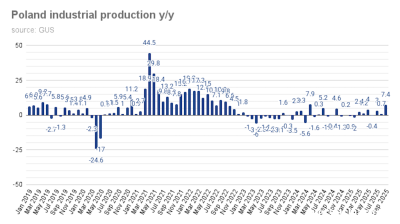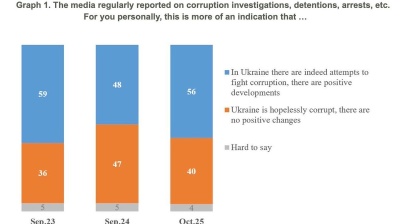Economic development was mainly supported by the service sector and primary production, but their recovery also slowed in September, the Bank of Finland Institute for Economies in Transition (BOFIT) said in its weekly update.
In the other main industries, the development weakened in September. According to the forecast of the Russian Ministry of Economy, Russia's GDP contracted by 3.8% in July-September and by 3.5% year on year in January-September.
Of the consumer-driven sectors, retail trade froze in September and trade was still 3% lower than a year earlier. The exception was the car sector, where new cars were sold 3% more than a year earlier. In other service sectors, the recovery continued, but slowed from previous months. In September, service production was still 12% lower than a year earlier.
The recovery in industrial production also dragged on in September, driven by the processing industry. In the extractive industries, the recovery continued, but at a more moderate pace. However, industrial production statistics were revised upwards in September for this year and last.
In the light of the new figures, industrial production contracted by only 3% y/y in January-September, almost 2 percentage points less than previously estimated. In particular, production of machinery, equipment and means of transport has declined more moderately than previously estimated. Such a major revision is also likely to raise GDP slightly in the early part of the year.
Agricultural production continued to grow in September, as throughout this year, but growth slowed to 1%. Construction output remained at the same level as a year earlier. In recent months, however, housing construction seems to have become the driving force behind construction output, growing by 6% y/y in July-September after a sharp drop in the spring.
As bne IntelliNews reported there is currently a boom in residential housing construction driven by the government’s highly successful mortgage subsidy programme.
Developments in the labour market were mixed. Unemployment started to fall slightly in September and the unemployment rate was 6.3%.
In contrast, real wage growth stalled as early as August, from which the latest wage statistics derive. Household real disposable income decreased by 5% y/y in July to September. Revenue statistics were revised downwards in September for the whole of this year. Indeed, the purchasing power of Russian households is still at a lower level than a decade earlier.
Data

Chobani yoghurt king Hamdi Ulukaya becomes richest Turk
Knocks Murat Ulker into second place in Forbes ranking as his company's valuation leaps to $20bn.

Poland’s industrial production jumps 7.4% y/y in September
September saw an unexpectedly sharp increase in industrial production after the surprise gain of 0.7% y/y in August.
Ukrainian M&A market grows 22% despite war, driven by local investors
Two large acquisitions by agriculture holding MHP and mobile operator Kyivstar accounted for more than half of the total deal value.

Ukraine’s credibility crisis: corruption perception still haunts economic recovery
Despite an active reform narrative and growing international engagement, corruption remains the biggest drag on Ukraine’s economic credibility, according to a survey by the Kyiv International Institute of Sociology.




_2_1761012864.jpg)